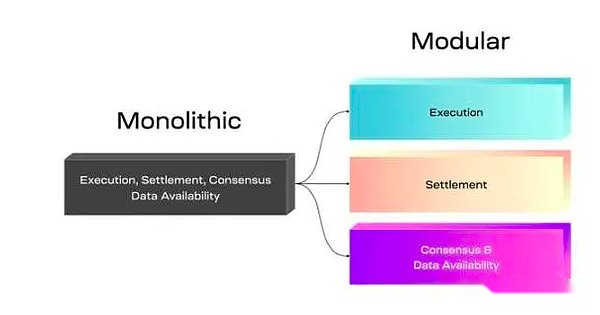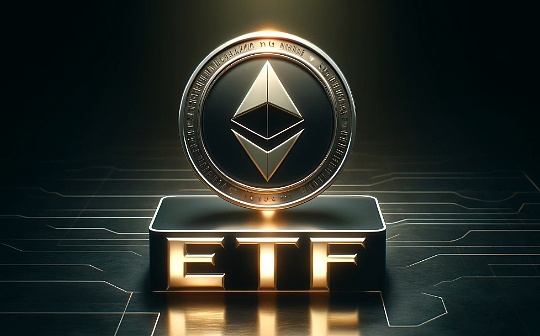
Author: lindabell, source: chainfeeds
Dencun upgrade will be held on March 13.As an important node on the development road of Ethereum, the EIP-4844 introduced by this upgrade will significantly improve the efficiency of the Ethereum L2 network. By introducing the new BLOB space data structure, helping Ethereum can achieve higher throughput on Rollup on ROLLUP.Quantity and lower cost.
In this context, Chainfeeds invited Ethereum OG Guru to discuss the key issues of Ethereum ecosystem together, including the importance of the chain, the importance of decentralization in the development of the blockchain, as well as DEFI, stabilization and valuePotential development of storage and other fields.
Guru is the Chinese compilation of Ethereum White Paper, who has participated in Ethereum crowdfunding.In addition, he created the blockchain education platform currency and multi -chain smart wallet MyKey, which is also the evangelist of Degate.
Key points:
1) The end of the blockchain industry is the modular blockchain, that is, Layer1 + Layer2, which may appear in the future;
2) The blockchain provides a “non -national independent space” that promotes the development of global financial infrastructure, enabling any user to trade freely through the private key, and it will derive unexpected applications;
3) When the underlying infrastructure throughput is not a problem, the blockchain trading paradigm will change, and the thin trading mode may become the final form;
Blockchain final: Who is more good for modular blockchain and single blockchain?
The debate between modularity and monomers in the blockchain field has never stopped, and each camp firmly believes that its own plan is better.Twitter is full of disputes about these two solutions, involving many problems such as cost, speed, decentralization, and scalability.In this Spaces, Guru also expressed his views.He believes that the end of the blockchain industry is a modular blockchain, namely the combination of Layer1 and Layer2, and explains its own point of view from the perspective of GAS cost and decentralization.

GAS cost
In the single blockchain, each consensus node must verify each transaction of each block.This means that when dealing with a large number of transactions, each node will bear a huge calculation burden.For example, if the transaction demand of the blockchain increases to 100,000 per second, each consensus node must be dealt with 100,000 transactions per second, which will be a huge challenge.
In contrast, Guru believes that the cost of modular blockchain GAS is lower.Taking the Rollup Rolls Expansion route as an example, Layer1 provides services for computing and data storage. Layer2 processing actual transactions will eventually evolve into application transactions on the second floor.Guru raised an example. Suppose there will be 50 Layer2 in the future. Each layer2 will deal with 2,000 transactions per second. The entire modular ecosystem can handle 100,000 transactions per second. The verification of the transaction is finally completed at the Layer1 node.Such models are more economical for the entire ecosystem, because each node does not require verification and calculation of each transaction, and only needs to pay the hardware cost of 2000 transactions per second.In addition, after the completion of the Cancun upgrade, Layer2 will become very cheap with BlockData. It is expected that the price of the GAS at the data level will drop at least one order of magnitude, and may even be two magnitude magnitude.Considering costs and GAS costs, for different Layer2, GAS costs can be reduced by at least 80%.
Decentralization
From a decentralized perspective, the single blockchain may ultimately have only a dozen or less nodes left, and these nodes are likely to be operated by the data center.In this case, the government or other entities can interfere with the operation of the blockchain by controlling these nodes, thereby affecting its decentralized characteristics.Taking Bitcoin as an example, the government may restrict its issuance or control trading rules.Guru said,In this case, the blockchain will lose its core value, that is, independence.Therefore, the single blockchain may not be able to achieve true decentralization, and its ecosystem will become fragile and vulnerable.
In contrast, in the modular blockchain, Layer2 is actually not very independent, because the main purpose of the overall design is to make Layer2 lose some independence and belong to Layer1.In other words,Although Layer2 still retains a certain degree of autonomy, the final power is controlled on Layer1.Guru said that such a design model can retain the decentralized characteristics of Layer1’s entire network.For example, Arbitrum has realized the characteristics of no trust and no license, that is, Trustless and Permitles.
On the “non -national space” of the blockchain: trust, expansion and financial revolution
The term “non -national space” refers to the early stages of state formation, and most of the regions have not yet been ruled by the state. Therefore, a large “non -national space” formed between points and points of the national distribution.There are various original human tissues in these spaces, such as tribes.In this concept, leaving the national border means gaining independence and freedom.In the early days, the scope of the country is usually limited to the range of about 48 kilometers, which is the scope of the country’s can effectively control.
Making this concept into the blockchain is the so -called independent space, which means that it is independent of the national system.This independent space provides an environment of decentralization, autonomy and freedom, allowing individuals to better control their data and assets.Similar to the early “non -national space”, the “non -national space” on the blockchain is a network composed of decentralized nodes and does not have a centralized rule.
Guru pointed out,Bitcoin is the earliest application in the blockchain “non -national space”, showing the decentralized characteristics and the perfect fit of the currency market.Subsequently, more and more flexible applications appeared in blockchain -based technical architectures, such as DEFI, NFT, and lending.The essential blocks of these applications and Web2 are the “non -national space” of the blockchain.So why choose to build applications on the blockchain, what advantages can the blockchain “non -national space” bring?Guru also interpreted:
-
trust:Blockchain applications have improved users’ trust in applications because their data is publicly visible and cannot be tampered with.For example, the issue tokens can be disclosed on the chain, and anyone can verify its effectiveness;
-
Expansion space:Guru in “>Final interpretation (above): Ethereum is winningThe article also mentioned that the “non -national space” of the blockchain will gradually develop into an Internet financial center, covering various DEFI applications, decentralized transactions, mortgages, stable coins, etc. on Bitcoin, Ethereum, etc., forUsers provide more financial options and services;
-
Product market fit:Guru especially mentioned the product market in the blockchain “non -national space”, especially in terms of cross -border payment.Different from the high expenses of traditional international remittances, it provides low transfer costs and efficient transaction speeds, which provides convenience for global economic activities.
-
Migrantization process:Although the US dollar consensus is stronger, there is a national border problem, which leads to the slow process of US dollar.However, with the popularity of blockchain technology, the trend of the second wave of US dollars may occur, so that products like the US dollar are widely used in blockchain “non -national space”;
-
Asset blockchain:Guru believes that the demand for asset blockchain is essentially attractive.Blockchain technology makes the upper chain of assets possible, which further expands the application scenario.For example, the real estate certificate has become a NFT token, which can be used as a pledge to provide users with convenient lending services.From a long -term perspective, the asset -based on the chain is an exciting track, which will derive many innovation and applications;
Blockchain trading paradigm evolution
As the Evangelist evangelist of ZK Rollup order book, Dex Degate, Guru also shared his views on the future form of the exchange in Spaces.
DEGATE is an Ethereum ecological decentralized order book protocol based on ZK Rollup. It does not need to be trusted and supports no license.At present, it has officially entered the main network stage on January 9 this year.As of now, its TVL has reached US $ 64.67 million, and its cumulative turnover has exceeded 200 million US dollars.
Guru believes that decentralized transactions are essential for the blockchain ecology.He said,When blockchain throughput is sufficient to support 100,000 transactions per second, for users, the cost of transactions in the chain is the lowest and the most convenient.However, the current high GAS costs restrict applications like DEFI, which has caused most transactions to occur on a centralized exchange.However, Guru believes that with the increase in the throughput of the chain, future transactions will be completed more in the chain.He emphasized that it takes some time,But once the throughput of the underlying infrastructure is no longer a problem, the order book will become the final transaction form used by the exchange.
Guru also mentioned that the earliest decentralized exchange on the blockchain was actually based on an order book, such as EtherDelta.However, as the number of users increases, the cost of GAS has increased, resulting in low efficiency of decentralized transaction efficiency in the entire order book type.As a result, the AMM model came into being, and its biggest advantage was GAS high efficiency.But in terms of transaction product form, there is a defect of low capital efficiency.Guru pointed out,Traditional exchanges, such as the New York Stock Exchange and Shanghai Stock Exchange, choose the order book model because the order book has the advantages of flexible, high capital efficiency, and can achieve various complex trading strategies through APIs.
In addition, Guru also summarized the characteristics of Degate:
-
Asset autonomy:Like all DEX, the degate private key is preserved by users, and the assets are completely attributed to users. No one can use or freeze the user’s assets without authorization;
-
Order book transaction:Provide better experience, higher capital efficiency and greater flexibility;
-
There is no money to get on the currency:Users only need to pay the GAS fee to go online for any ERC20 tokens compatible with the agreement
-
Decentralized grid transaction:Similar to Uniswap V3, users can provide funds in the specified price range.
-
Decentralization fixed investment:Allow users to set the time interval of regular trading assets to the impact of smooth market fluctuations;
-
Wind -hanging transaction is free:Users do not need to pay GAS fees and transaction fees.








